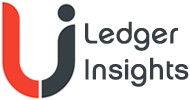Last week the European Commission launched a consultation regarding the capital markets union (CMU), which runs until 10 June. It is part of the Commission’s Savings and Investment Union (SIU) strategy, which aims to improve capital flows and investment opportunities across EU member states. The document includes many detailed questions about distributed ledger technology (DLT).
The questionnaire is extensive (93 pages), with a five-page section dedicated to the DLT Pilot Regime and tokenization more broadly. However, there were dozens of additional probing questions on DLT across a broad range of topics, with the ultimate goal being legal certainty.
For example, it asks whether the Settlement Finality Directive is necessary where there’s atomic settlement. On the other hand, it highlights that the point in time when a transaction becomes irrevocable may be harder to pinpoint on a DLT-based system.
Regarding collateral, the current definition in the Financial Collateral Directive (FCD) covers cash, financial instruments and credit claims, which would include a lot of tokenized assets. However, it considers whether there’s a need to expand the definition of collateral to encompass other DLT-based assets (such as crypto?).
DLT Pilot Regime
The section on the DLT Pilot Regime probes potential changes. Despite the legislation coming into force two years ago, only two institutions have received approval so far (21X and CSD Prague), with larger institutions shunning it.
An important question is whether the concept of a combined DLT trading and settlement (TSS) should be enshrined in the mainstream laws, CSDR and MIFID.
It’s an arduous process to land a DLT Pilot Regime license, so the consultation explores whether the licenses granted under the regime should be permanent. Plus, the Commission wants to know whether the limits on transaction volumes should be adapted to the size of the participant (like the UK’s Digital Securities Sandbox). While the DLT Pilot Regime currently waives certain laws, the consultation even considers a more flexible version that might be based on principles.
A key question is whether there are regulatory barriers not addressed in the DLT Pilot Regime that need attention.
Supporting DLT, permissionless blockchains
A whole section of the consultation relates to permissionless blockchains. Last November the European Commission published a report arguing for the use of permissionless blockchains in traditional finance.
Current Basel rules for banks make it prohibitively expensive for banks to use permissionless blockchains for tokenization. The Commission mentions that the EU transition rules for Basel don’t make a distinction between permissionless and permissioned chains, implying that EU banks could use permissionless blockchains currently. It asks how the risks of permissionless blockchains in the BIS working paper can be mitigated.
The Commission explores whether public policy should intervene to support integration between DLT and legacy system. It poses the same question about the integration between different DLTs. On the one hand, the Commission is trying to be supportive. But if one imposes rules at this early stage, it could also inhibit innovation.
It wants to know which is the best path to multi DLT interoperability. One option it considers is that a CSD would be integrated with numerous blockchains and act as a central hub. Alternatively, a technology company could provide interoperability for regulated financial institutions. A third option is that a regulated entity provides an interoperability solution for regulated financial institutions. The Commission is open to alternative routes.
However, a key takeaway is that the Commission is mulling whether to regulate interoperability providers. Historically, cross chain bridges have resulted in the loss of considerable amounts of funds on permissionless blockchains. Two current popular solutions in traditional finance are Ownera’s FinP2P and Chainlink’s Cross-Chain Interoperability Protocol (CCIP).
Conflict of Laws
The consultation highlights the legal complexities of tokenization, not just within the EU. An important question is which laws apply to a transaction?
As a glimpse into the complexity, say you have a buyer in Spain using a Spanish custodian and a seller in Germany. The securities’ issuer is based in France, the secondary market is located in Italy and the central securities depository is in Belgium. If something goes wrong, which country’s laws apply?
The EU already has some “conflicts of laws” rules included in various legislation. For example, the Settlement Finality Directive (SFD) states that if there’s collateral held at a central securities depository (CSD), then the law of the CSD’s country applies.
Legislation tends to refer to a CSD’s location or where an account is held. But where that account is linked to a distributed ledger, it may be less clear. Hence, there is a specific question asking about the applicable law:
What is the preferred connecting factor in relation to (a) proprietary (b) contractual (c) system-related aspects related to transactions on a DLT system?
- the law chosen by the participants to a transaction;
- the law chosen by the network participants;
- the law of the legal entity operating the DLT-based system on which digital assets are recorded;
- in relation to a digital asset of which there is an issuer, the domestic law of the State where the issuer is established;
- the place of the relevant operating authority/administrator (PROPA); the primary residence of the encryption private master keyholder (PREMA);
- any other?
Would the differences between permissioned and permissionless DLT systems, warrant different rules on conflict of laws)?
The consultation highlights the delicate balance between providing legal clarity and increasing the compliance burden. The outcomes of this process could shape the European digital assets landscape for years to come.






